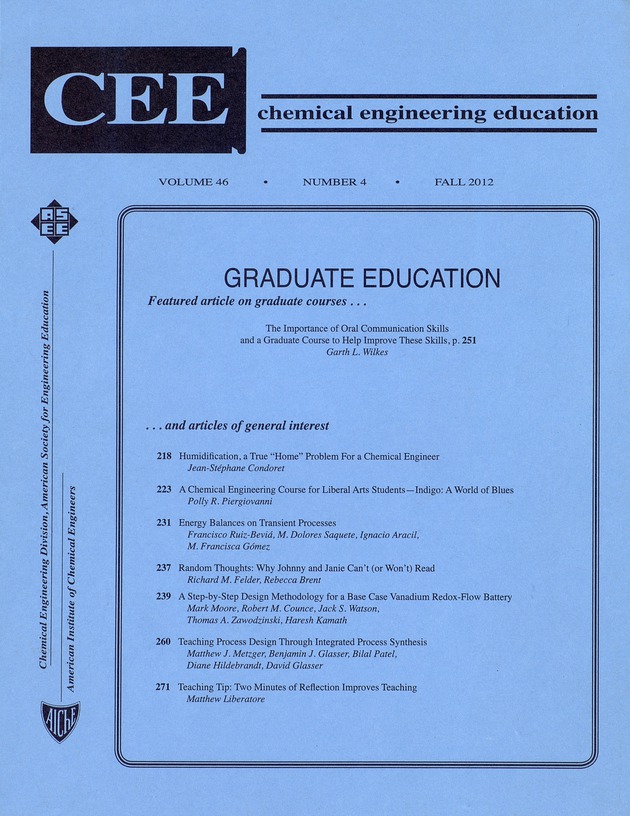A Step-by-Step Design Methodology for a Base Case Vanadium Redox-Flow Battery
Abstract
The purpose of this work is to develop an evolutionary procedure to be used by Chemical Engineering students for the base-case design of a Vanadium Redox-Flow Battery. The design methodology is based on the work of Douglas (1985) and provides a profitability analysis at each decision level so that more profitable alternatives and directions can be indentified before additional time and effort is expended on an impractical design. Ultimately, a base case flow sheet and capital cost estimate are generated; this type of design activity as the work presented here is referred to as creation and analysis of a study level design.


